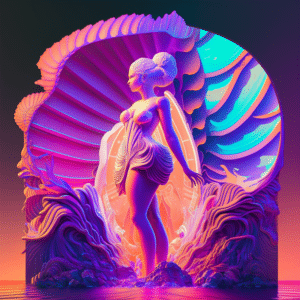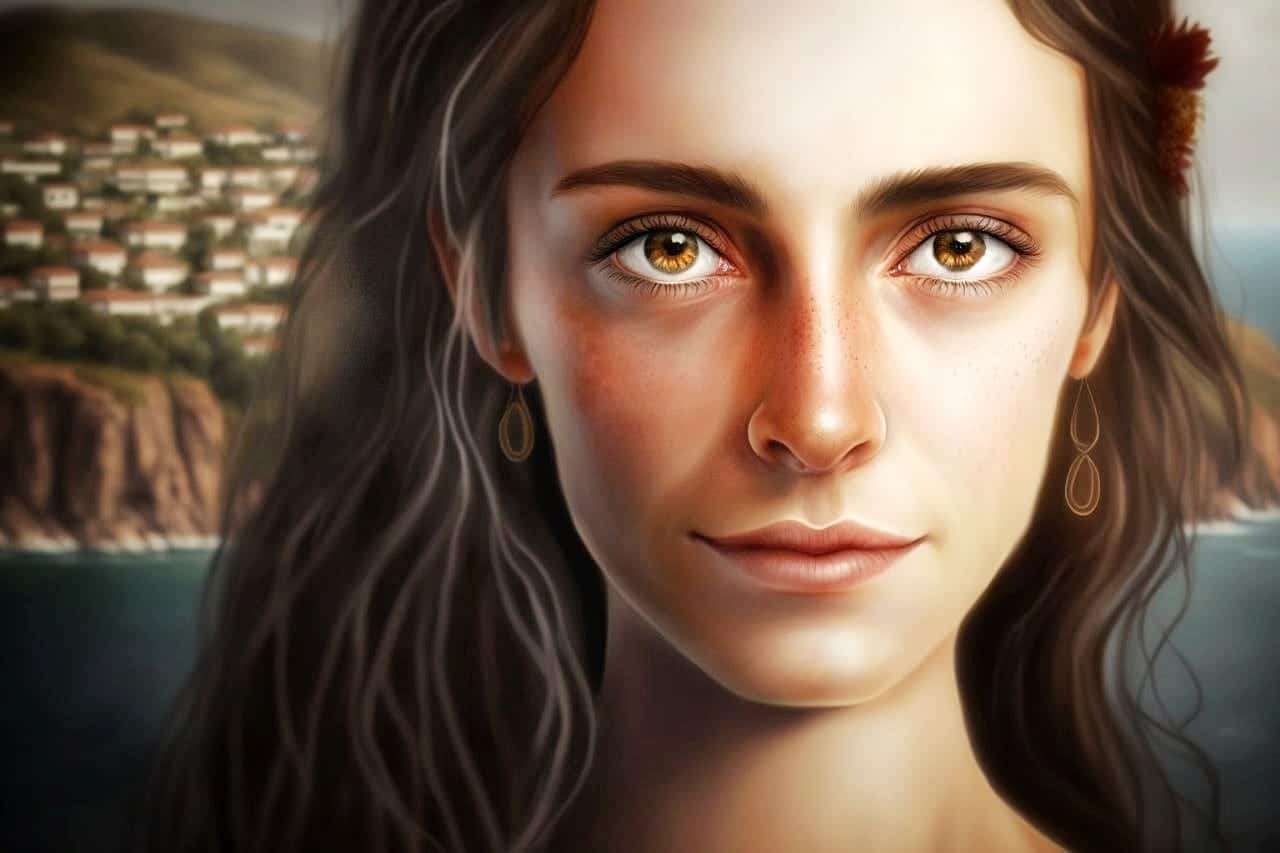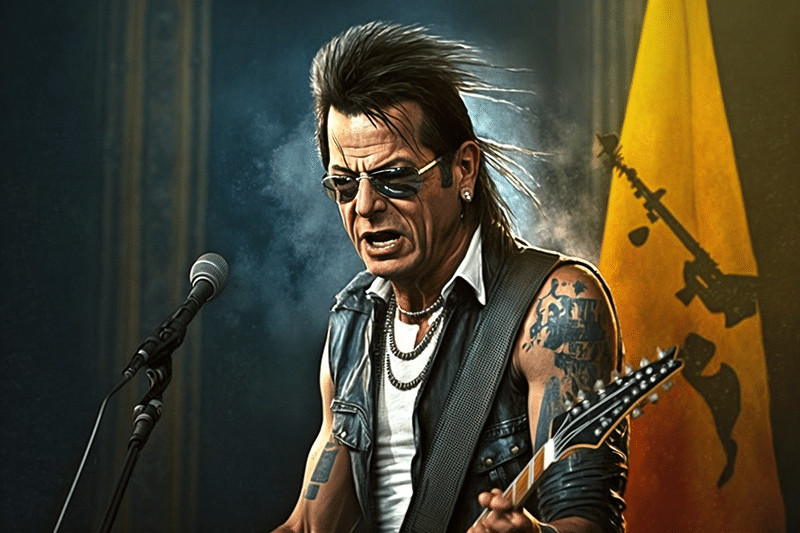AI image generation is changing the way we make art. ALIX NORMAN speaks to an expert image creator, who is turning his imaginings of Cyprus into tangible images
If the island of Cyprus were personified, what would we see? If former president Nicos Anastasiades had become a rock star rather than a politician, how would he appear? And if Aphrodite had risen from the waves into a cyberpunk future, what would she look like?
With the advent of Artificial Intelligence, we can now take imagination from brain to reality. Using a simple text prompt, people who have never once held a paintbrush are now able to create incredible images: detailed portraits, implausible landscapes, stunning abstracts. You can mimic a particular style or artist. You can choose whatever subject takes your fancy. You can use your own images as the base for fantastical creations. And, using this emerging technology, you can even win traditional art competitions.
On August 26, 2022, the Colorado State Fair fine arts competition awarded top prize to artist Jason Allen for his piece Théâtre D’opéra Spatial. The canvas depicted a sweeping scene, half-renaissance, half-space opera. The brushstrokes were perfect, the subject provocative, the detail magnificent – the judges were blown away.

Aphrodite rising from the waves into a cyberpunk future
Then, barely a month after his win, Allen stunned the art community by announcing that the entire piece had been generated using AI. He’d used Midjourney to come up with the image, processed it with Photoshop, and used Gigapixel AI to enlarge and refine the image to the point that it was undetectable from a real painting.
The judges were outraged, of course. Artists far and wide described this circumventing of the rules as ‘horrifying’ and ‘gross’. But others were more pragmatic. Like Panagiotis Monogios, they knew that AI generated art was here to stay.
“Yes, the winner should have been upfront about what he’d done,” says Panagiotis, a visual artist and Nicosia-based expert in AI image generation. “But this new method of creation is not something we can ignore: AI-generated art is here for good.”
Originally a web designer and blockchain and cryptocurrency expert, 26-year-old Panagiotis is at the forefront of AI image content in Cyprus. “I started creating AI generated art in 2019, using Google Collab to play with others’ algorithms. I began writing my own algorithms; sharing them with fellow AI enthusiasts. And then, with the launch of platforms such as Dall-E and Midjourney, the entire process became much easier, the art more detailed and realistic. I immediately subscribed to both.”
While there are many similar programmes, the two Panagiotis refers to are probably the best known. Both are artificial intelligence programmes that create images from textual descriptions; not unlike ChatGPT, they require the user to create written ‘prompts’ that instruct the programme what to do. But while ChatGPT answers queries in conversational, coherent paragraphs, Midjourney and Dall-E turn words into art.
“The words you use, the order they’re in, the length of the prompts – all of these will change the final output,” explains Panagiotis. “You can specify medium, style, texture; choose your lighting, angle, and background. You can upload your own image to draw from, or ask the programme to reference the style of a particular artist. The more you play around, the more you learn.”
This exploration into unknown territory has seen Panagiotis launch an entire side business. Already an accomplished coder with a steady job, he now spends his free time creating AI generated content. “I opened an Etsy store selling AI generated images in the form of canvases, flags and posters,” he explains. “It’s been so popular, I’m now launching a website to help others learn to use image-generation programmes.”
Panagiotis has also taken the next step, using AI for moving content. “This technology doesn’t stop with static art,” he reveals. “For a while now, I’ve been combining various AI programmes and my own visual animations to create video for parties and festivals. Most recently, I’ve been implementing animated image loops for local band Bloom Fields; using the music to inspire the AI video content, which is then projected onto the stage.”
While this may all seem a little complex, it’s certainly not as hard as it sounds. “Anyone can start using Midjourney or Dall-E; all you need is an ability to put your imagination into words, and a dedication to creation,” says Panagiotis. “You’ll be spending a lot of time researching prompts, playing with words to get the pictures you want. But the first few images are free to create, so it’s easily accessible to everyone.
“This content certainly won’t take over from traditional art,” he adds. “Like watercolour or oils or gouache, it’s merely another method of creation. But I think it may take a while before people begin to accept this new technology.”
History is littered with innovations that were initially met with resistance, scepticism or even ridicule. In the 15th century, many people saw the printing press as a threat to traditional methods of information dissemination. But its transformative effect led to a boom in literacy and the spread of knowledge, laying the groundwork for the information age.
Similarly, the telephone was widely mocked as a frivolous invention when first introduced in 1876. In the 1970s, the first personal computers were seen as toys for hobbyists, with little practical use. And when smartphones hit the market in the late 2000s, many dismissed them as unnecessary gadgets for tech enthusiasts, rather than the tools for communication, navigation and entertainment they’ve since become.
“I think it’s important to remember,” says Panagiotis, “this new AI technology is a tool. It’s efficient, exciting, engaging. It’s inspired thousands of people to create, taught them about artists and artistic styles, filled the internet with beautiful images.
“But at the end of the day, it is just that: a tool. It’s only as smart as its users. However,” he notes, “while AI can’t take your job, I think those who use AI will soon start taking jobs from those who don’t. I think that’s worth considering.”








Click here to change your cookie preferences